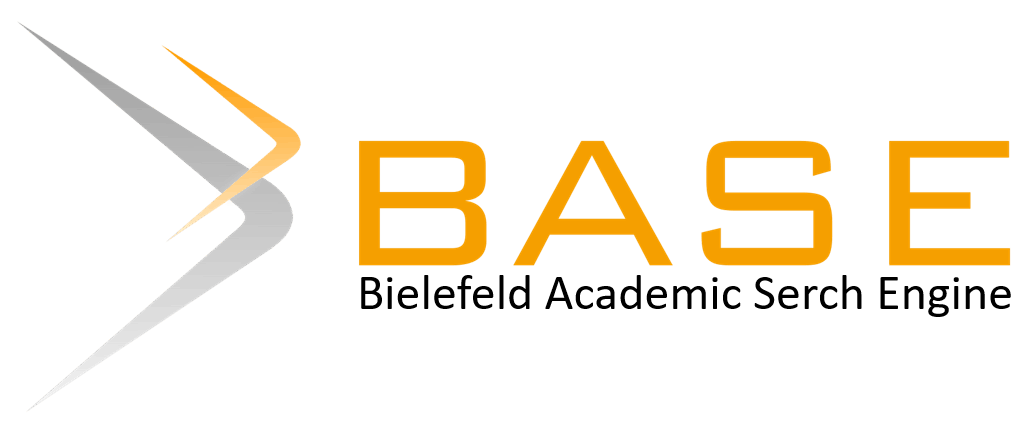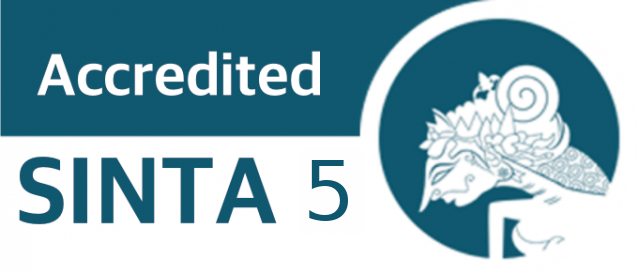Comparison Of Variations Of Low Dosage Spinal Anesthesia On Mobilization Speed After Caesarea Sectio Eracs Method At Hermina General Hospital Purwokerto
DOI:
https://doi.org/10.30595/hmj.v6i2.19276Keywords:
Low-dose spinal anesthesia, ERACS caesarean section, Mobilization onset, Bromage score.Abstract
Â
Enhanced Recovery After Caesarian Surgery (ERACS) is the development of sectio caesarean delivery techniques that offer preoperative, intraoperative, and postoperative care to hasten patient recovery. The ERACS technique is related to using low-dose spinal anesthesia, which is using a bupivacaine dose of 3.75–12 mg. The use of low doses in sectio caesarean can help the speed of patient mobilization, which can be measured by achieving a Bromage score. The study aims to compare the effectiveness of giving low-dose spinal anesthesia type bupivacaine 6 mg compared to bupivacaine 7.5 mg on the post-sectio caesarea mobilization speed of the ERACS (Enhanced Recovery After Caesarian Surgery) method at Hermina General Hospital Purwokerto. This type of research is observational and analytical with a cross-sectional study approach. The sampling technique used was consecutive sampling, so a study sample of 58 respondents was obtained, which was divided into two groups, namely the bupivacaine dose group of 6 mg and the bupivacaine dose group of 7.5 mg. Results were analyzed using the Mann-Whitney test. The results of statistical tests showed that the bupivacaine group at a dose of 6 mg and the bupivacaine group at a dose of 7.5 mg (p = 0.534) did not have a significant difference in effectiveness against the onset of post-sectio caesarean mobilization speed of the ERACS method (P > 0.05). This study concludes that there is no difference between the comparison of the effectiveness of administering low-dose spinal anesthesia type bupivacaine 6 mg compared to bupivacaine 7.5 mg on the speed of mobilization after caesarean section using the ERACS (Enhanced Recovery After Caesarian Surgery) method at Hermina General Hospital Purwokerto. The maximum time achieved for the onset of mobilization after ERACS to achieve a bromage score is in the range of 1 – 2 hours (60 – 120 minutes) with the level of mobilization after caesarean section being a score of 1 and a score of 0.Â
Â
References
- Białowolska, K., Horosz, B., Sękowska, A., Malec-Milewska, M., 2020. Fixed dose versus height-adjusted conventional dose of intrathecal hyperbaric bupivacaine for caesarean delivery: A prospective, double-blinded randomized trial. J. Clin. Med. 9, 1–10.
- Bizuayew, H., Abebe, H., Mullu, G., Bewuket, L., Tsega, D., Alemye, T., 2021. Post-cesarean section surgical site infection and associated factors in East Gojjam zone primary hospitals, Amhara region, North West Ethiopia, 2020. PLoS One 16, 1–15.
- Depkes RI. 2016. Peraturan Menteri Kesehatan Nomor 25 tahun 2016 tentang Rencana Aksi Nasional Kesehatan Lanjut Usia Tahun 2016-2019. Jakarta : Kementrian Kesehatan RI.
- Ferrarezi, W.P.P., Braga, A. de F. de A., Ferreira, V.B., Mendes, S.Q., Brandão, M.J.N., Braga, F.S. da S., Carvalho, V.H., 2021. Spinal anesthesia for elective cesarean section. Bupivacaine associated with different doses of fentanyl: randomized clinical trial. Brazilian J. Anesthesiol. (English Ed. 71, 642–648.
- Fitria, W.E., Fatonah, S., Purwati, P., 2019. Faktor Yang Berhubungan Dengan Bromage Score Pada Pasien Spinal Anastesi Di Ruang Pemulihan. J. Ilm. Keperawatan Sai Betik 14, 182.
- Huang, Q., Wen, G., Hai, C., Zheng, Z., Li, Y., Huang, Z., Huang, B., 2022. A Height-Based Dosing Algorithm of Bupivacaine in Spinal Anesthesia for Decreasing Maternal Hypotension in Cesarean Section Without Prophylactic Fluid Preloading and Vasopressors: A Randomized-Controlled Non-Inferiority Trial. Front. Med. 9, 1–10.
- Indradata, F., Dwi Purnomo, H., Thamrin, M.H., Budi Santoso, S., Tri Arianto, A., Supraptomo, R., 2021. Perbandingan Efektivitas Anestesi Spinal dengan Bupivacain 12,5 Mg dan Bupivacain 5 Mg yang ditambah Fentanyl 50 Mcg pada Seksio Sesarea. J. Anestesi Obstet. Indones. 4, 11–7.
- Kayir, S., Kisa, A., 2021. The evolution of the regional anesthesia: A holistic investigation of global outputs with bibliometric analysis between 1980-2019. Korean J. Pain 34, 82–93.
- Nadiya, S., Mutiara, C., 2018. Hubungan Mobilisasi Dini Post Sectio Caesarea (SC) dengan Penyembuhan Luka Operasi di Ruang Kebidanan RSUD dr. Fauziah Kecamatan Kota Juang Kabupaten Bireuen. J. Healthc. Technol. Med. 4, 187.
- Ningsih, N.J. setia, Rahmadhani, W., 2022. the Role of Early Mobilization on Wound Healing After Sectio Caesarea. J. Sex. Reprod. Heal. Sci. 1, 7.
- Ratnasari, F., 2022. Pengaruh Sectio Caesarea Metode Eracs Terhadap Percepatan Mobilisasi pada Ibu Bersalin di RS Hermina Daan Mogot Tahun 2022 2, 821–829.
- Razan, A., Wijianto, W., 2021. The effectiveness of mobilization in improving mother’s functional status after caesarean section delivery. Acad. Physiother. Conf. Proceeding 542–546.
- Sulistyawan, V., Isngadi, I., Laksono, R.M., 2020. Perbandingan Outcome Teknik Spinal Anestesi Dosis Rendah Dibandingkan Dosis Biasa pada Sectio Caesarea Darurat di Rumah Sakit dr. Saiful Anwar. J. Anaesth. Pain 1, 37–44.
- Supriyatin, T., Siwi, A. sekar, Rahmawati, A.N., 2022. Pencapaian Bromage dan Aldrete Score pada Tindakan Anestesi di Instalasi Bedah Sentral (IBS) RSUD Ajibarang.
- Tika, T.T., Sidharti, L., Himayani, R., Rahmayani, F., 2022. Metode ERACS Sebagai Program Perioperatif Pasien Operasi Caesar. J. Med. Hutama 03, 2386–2391.
- Wang, H.Z., Chen, H.W., Fan, Y.T., Jing, Y.L., Song, X.R., She, Y.J., 2018. Relationship between body mass index and spread of spinal anesthesia in pregnant women: A randomized controlled trial. Med. Sci. Monit. 24, 6144–6150.
Downloads
Published
Issue
Section
License
For submission of manuscripts to the Herb-Medicine Journal, the authors must certify that:
I have been authorized by my co-author to submit the manuscript to the Herb-Medicine Journal
I hereby declare, on behalf of myself and my co-authors, that:
The submitted manuscript is original work and has not been published in another peer-reviewed journal or is being considered for publication by another journal. Also, the manuscript does not infringe any existing copyright or other third party rights.
The manuscript does not contain material that may violate the law, slander, or SARA, in any way, violates the terms and conditions contained in the agreement
I/we have taken care that the scientific knowledge and all other statements contained in the manuscript are in accordance with authentic facts and formulas and will not, if followed appropriately, harm the user
No liability shall be assumed by Herb-Medicine Journal, its staff or members of the editorial board for any injury and/or damage to persons or property as a matter of product liability, negligence or otherwise, or from the use or operation of any method, product instructions, advertising , or ideas contained in publications by the Herb-Medicine Journal
Authors who publish in the Herb-Medicine Journal certify that all authors have read and agree to the contents of the Cover Letter or the Terms and Conditions. Plagiarism is strictly prohibited, and by submitting a manuscript for publication, the author agrees that the publisher has the legal right to take appropriate action against the author, if plagiarism or false information is found. Once submitted to the Herb-Medicine Journal, authors will not withdraw their manuscript at any stage prior to publication.
The author owns the copyright and grants the journal rights for first publication with the work simultaneously licensed under a Creative Commons Attribution License which allows others to share the work with acknowledgment of the work's authorship and initial publication in this journal.
Authors may enter into separate additional contractual agreements for the non-exclusive distribution of the published journal version of the work (for example, posting it to an institutional repository or publishing it in a book), with acknowledgment of its initial publication in this journal.
Authors are permitted and encouraged to post their work online (for example, in institutional repositories or on their websites) prior to and during the submission process, as this can lead to productive exchanges, as well as earlier and larger citation of published work (See The Effects of Open Access).
Untuk pengiriman naskah ke Herb-Medicine Journal, penulis harus menyatakan bahwa:
- Saya telah diberikan otorisasi oleh rekan penulis saya untuk memasukkan naskah ke Herb-Medicine Journal
- Saya dengan ini menyatakan, atas nama saya dan rekan penulis saya, bahwa:
- Naskah yang dikirimkan adalah karya asli dan belum pernah diterbitkan dalam jurnal peer-review lain atau sedang dipertimbangkan untuk diterbitkan oleh jurnal lain. Serta, naskah tidak melanggar hak cipta yang ada atau hak pihak ketiga lainnya.
- Naskah tidak mengandung materi yang mungkin melanggar hukum, memfitnah, atau SARA, dengan cara apa pun, melanggar syarat dan ketentuan yang tercantum dalam perjanjian
- Saya / kami telah berhati-hati bahwa pengetahuan ilmiah dan semua pernyataan lain yang terkandung dalam naskah sesuai dengan fakta dan formula otentik dan tidak akan, jika diikuti dengan tepat, merugikan pengguna
- Tidak ada tanggung jawab yang ditanggung oleh Herb-Medicine Journal, stafnya atau anggota dewan editorial untuk setiap cedera dan/atau kerusakan pada orang atau properti sebagai masalah pertanggungjawaban produk, kelalaian atau sebaliknya, atau dari penggunaan atau pengoperasian metode, produk apa pun instruksi, iklan, atau ide yang terkandung dalam publikasi oleh Herb-Medicine Journal
Penulis yang menerbitkan dalam Herb-Medicine Journal menyatakan bahwa semua penulis telah membaca dan menyetujui isi Surat Pengantar atau Syarat dan Ketentuan. Plagiarisme dilarang keras, dan dengan menyerahkan naskah untuk publikasi, penulis setuju bahwa penerbit memiliki hak hukum untuk mengambil tindakan yang pantas terhadap penulis, jika ditemukan plagiarisme atau informasi palsu. Setelah diserahkan ke Herb-Medicine Journal, penulis tidak akan menarik naskah mereka pada tahap apa pun sebelum dipublikasikan.
Penulis memiliki hak cipta dan memberikan hak jurnal untuk publikasi pertama dengan karya yang secara simultan dilisensikan di bawah Lisensi Creative Commons Attribution yang memungkinkan orang lain untuk berbagi karya dengan pengakuan kepengarangan karya dan publikasi awal dalam jurnal ini.
Penulis dapat membuat perjanjian kontrak tambahan yang terpisah untuk distribusi non-eksklusif versi jurnal yang diterbitkan dari karya tersebut (misalnya, mempostingnya ke repositori institusional atau menerbitkannya dalam sebuah buku), dengan pengakuan atas publikasi awalnya di jurnal ini.
Penulis diizinkan dan didorong untuk memposting pekerjaan mereka secara online (misalnya, dalam repositori institusional atau di situs web mereka) sebelum dan selama proses pengajuan, karena dapat menyebabkan pertukaran yang produktif, serta kutipan yang lebih awal dan lebih besar dari karya yang diterbitkan (Lihat The Effect of Open Access).













